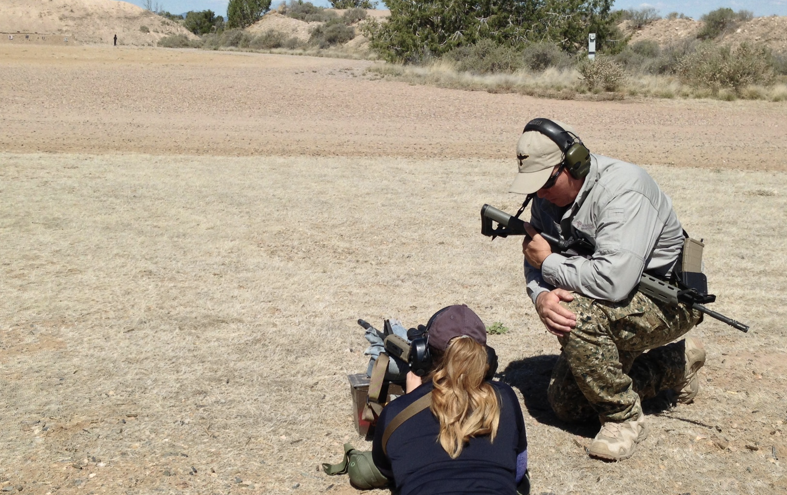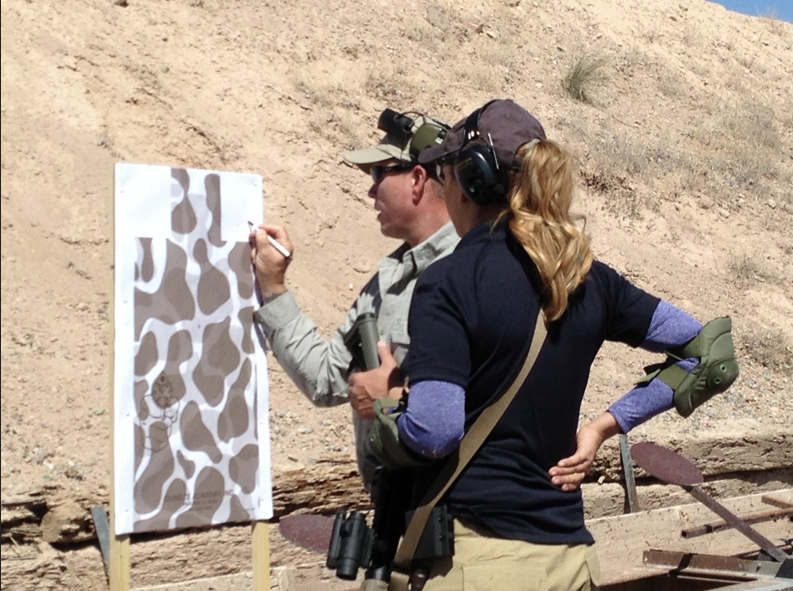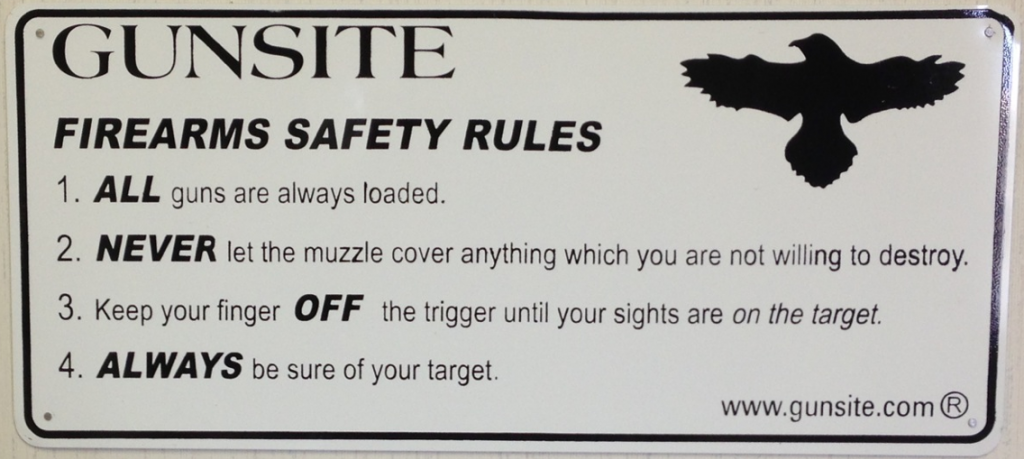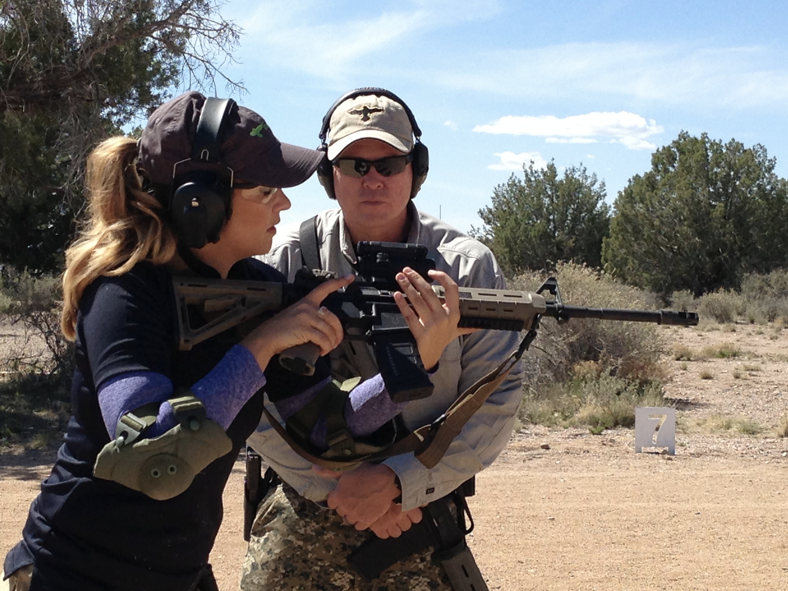* Editors note: TOWNHALL News Editor Katie Pavlich is participating in a multi-day firearms training course at the Gunsite Academy in Paulden, Arizona. Stay tuned for daily dispatches. The second dispatch is below. As the dispatches accumulate, they'll all be available here.
---
(Gunsite Academy, Paulden, AZ) My first full day of training at Gunsite in Paulden, Ariz. was what I would call a success, despite the fact I should have done a few more bicep curls before I got here.
First, let’s start with the basics, just like I did Friday morning. According to founder Jeff Cooper, the mission of Gunsite is to “provide good people with the skills by which they may conduct themselves as responsible citizens of a free society.”
What I experienced Friday reflects that mission. It is also important to note that Gunsite isn’t a shooting academy, it’s a defensive training academy. I’m currently taking the five day 223-basic carbine course jammed into three days for scheduling purposes. Before getting started early in the morning my instructor Dave, who is a former Yavapai County Sheriff’s Department SWAT team member and Army vet, had me fill out a few different waivers. After that, Dave explained the four basic rules of gun safety. At Gunsite, there are no “accidents” with guns, only negligence.
ALL guns are always loaded.
NEVER let the muzzle cover anything which you are not willing to destroy.
Keep you finger OFF the trigger until your sights are on the target.
ALWAYS be sure of your target.
Page Two: Training, Shooting and Photos from the Range
Recommended
These four basic rules are simple and an easy way to have a safe and problem free day out on any range. Now, any gun enthusiast knows you should always keep your finger off the trigger until your sights are on the target and when you’re ready to shoot, but one of the most interesting things I learned Friday has to do with how the body, specifically hands, act under stress. In a high stress situation, such as defending yourself or your home, when one hand does something, the other does the exact same thing without you ever noticing it. Why is this important? If you’re in a high stress situation with your finger on the trigger but aren’t yet ready to shoot and you go to squeeze or grab something with your other hand, guess what? You’ll end up pulling the trigger.
Throughout my training Friday, it became clear consistency and operating at a pace that will get you results is a very important component of self-defense training. Speed only comes with practice and you can’t rush getting there.
This is key when it comes to learning how to reload a carbine (the one I am using for my training is a Smith & Wesson AR-15). The ammunition magazines I am using are standard issue 30-round magazines.
There are two reloading techniques I learned Friday. The first is called a “tactical reload.” This type of reload isn’t conducted when the magazine is empty, rather when there is a break in a problematic situation, stress or lack of an immediate threat. The reload requires the shooter to grab a fully loaded magazine, place it next to the magazine currently attached to the carbine, drop the current magazine into the same hand as the new one, insert the fresh magazine and put the old but still partially loaded magazine into a pant pocket because it’s still valuable. A “speed reload” typically happens when a shooter runs out of ammunition in a high stress, immediate threat situation and is much simpler: run out of ammo, grab a new fully loaded magazine (or a partially loaded one if that’s all you have), drop the empty magazine to the ground and replace it with a swift push and pull. The speed reload can also be used when you need to fully load a gun in an immediate threat situation. Reloading can be done from a standing or sitting position.

(Photo credit: Jane Anne Shimizu)
In terms of shooting stance, I learned a whole bunch of them. If you’re standing and shoot right handed, feet are a little more than shoulder’s width apart with the right leg slightly back. The gun should be facing toward the target, held up in the shoulder and up in the cheek weld. Both eyes are to be kept open, no squinting required. Knees are bent but not much and the shoulders should be in front of the belt buckle. This stance provides a solid platform to shoot from and absorbs the recoil of the gun. Kneeling takes three different forms, the fastest is “speed kneeling,” which is similar to a lunge. Right handed shooters lunge out with their left foot and shoot the same way as if they were standing, always in a fighting forward position.
After shooting each number of required rounds, students at Gunsite are taught to survey their area for future threats, to put the safety on and to close the dirt shield on the right side of the rifle. On safety, the carbine is always carried on a sling with the muzzle pointing down and to the left, just outside of the foot.

(Photo credit: Jane Anne Shimizu)
(Photo credit: Jane Anne Shimizu)
Saturday and Sunday, Dave will be going over gun malfunctions, shooter readiness and moving shooting.
* Editors note: TOWNHALL News Editor Katie Pavlich is participating in a multi-day firearms training course at the Gunsite Academy in Paulden, Arizona. Stay tuned for daily dispatches. This was Pavlich's second. The first is here. As the dispatches accumulate, they'll all be available here.




